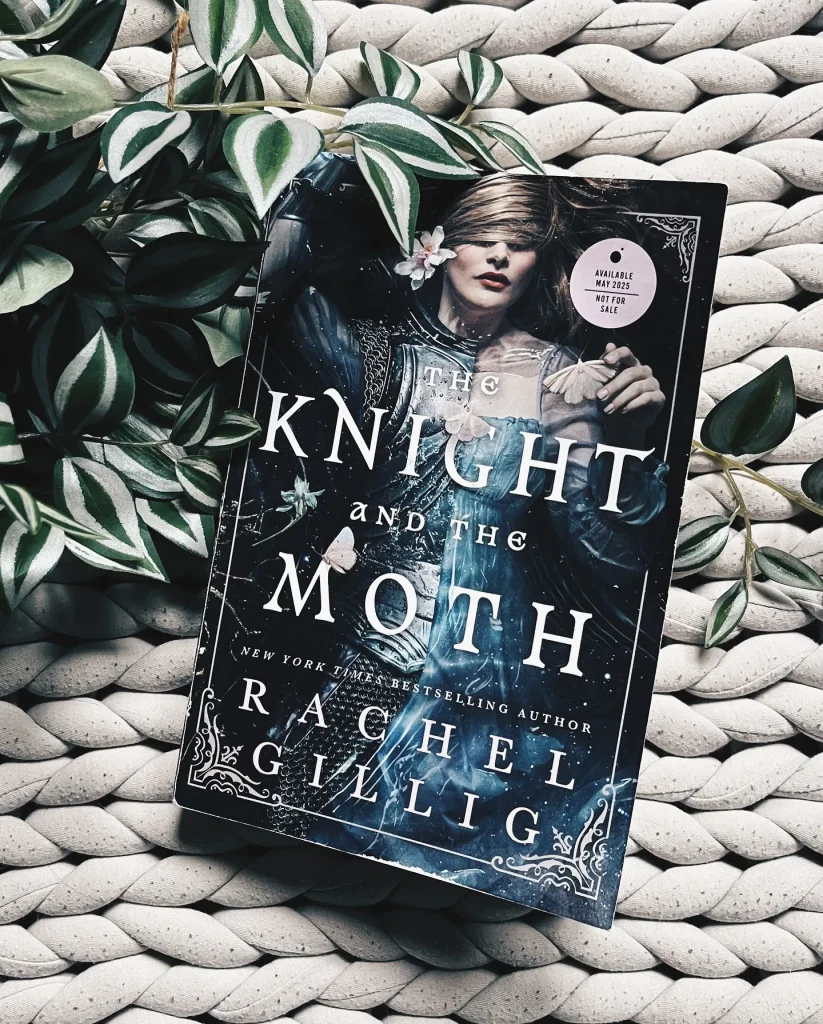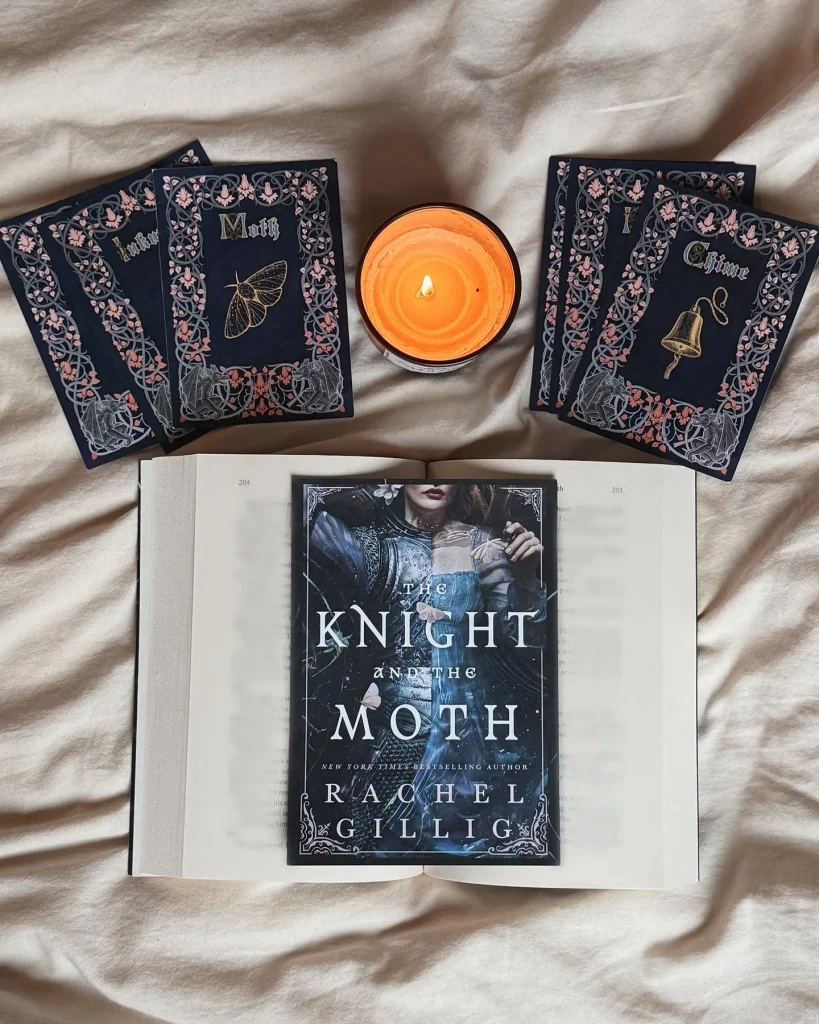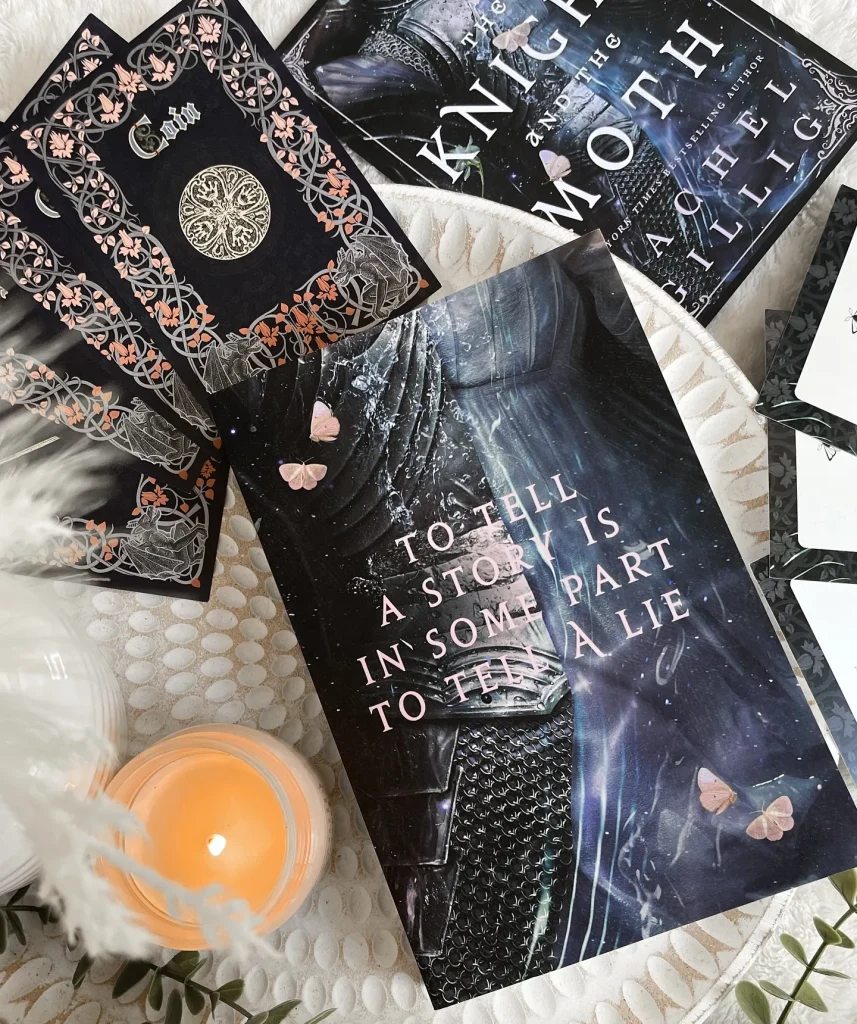The literary world often falls into a familiar rhythm: a breakout novel captures hearts, spawns a wave of imitators, and eventually leaves a genre feeling stale. Years ago, Twilight ignited a vampire frenzy, The Hunger Games birthed dystopian sagas, and more recently, A Court of Thorns and Roses flooded shelves with tales of enigmatic fae, while Fourth Wing unleashed a dragon-filled deluge.
As a devoted fan of romantasy, I’ve ridden these waves, only to find myself yearning for something beyond the well-trodden paths of brooding heroes and predictable arcs. That longing led me to The Knight and The Moth, a novel that rekindled my love for the genre with its haunting originality.
This review The Knight and The Moth explores why Rachel Gillig’s latest work stands apart, offering a gothic tapestry of mystery, romance, and reinvention that promises to captivate book lovers seeking a fresh adventure.
What is Rachel Gillig’s The Knight and The Moth About?
Set in the mist-shrouded kingdom of Traum, The Knight and The Moth centers on Sybil Delling, successes in the romantasy genre, a foundling bound to the enigmatic Aisling Cathedral as a Diviner. For nearly a decade, Sybil and her five fellow Diviners have submerged themselves in a sacred spring, its waters heavy with the scent of Gowan flowers, to commune with the Omens—six stone figures that deliver cryptic prophecies to pilgrims seeking their fates. As Sybil approaches the end of her ten-year service, she dreams of a life beyond the cathedral’s oppressive stone walls, unaware that her final divination will unravel her world.

When a young king visits Aisling and receives a dire omen, Sybil’s understanding of her purpose fractures. The sudden disappearance of her fellow Diviners deepens the crisis, thrusting her into a web of secrets that challenges the cathedral’s sanctity. Enter Rodrick, a knight whose sharp wit and skepticism toward the Omens make him both an infuriating foil and an intriguing ally. With his dark, guarded eyes and a past cloaked in mystery, Rodrick joins Sybil on a perilous quest to uncover the truth behind the vanishings and confront the cathedral’s hidden machinations.
Their journey unfolds across Traum’s gothic landscapes—windswept moors, shadowed forests, and treacherous waters—where faith, identity, and defiance collide. A stone gargoyle named Bartholomew, with his biting humor and unexpected loyalty, adds warmth and levity to their perilous path. The Omens, ever-present yet elusive, loom over the narrative, their whispers driving a mystery that questions the very nature of divinity. Gillig crafts a dark fairy tale that blends atmospheric tension with a slow-burn romance, setting the stage for a saga that feels both timeless and wholly original.
My Review The Knight and The Moth: A Fresh Spin on Romantasy’s Beloved Tropes
From the moment I opened The Knight and The Moth, Aisling Cathedral enveloped me like a living entity, its stone walls and oily, flower-scented waters conjuring an atmosphere so vivid it felt like a half-remembered dream. As a seasoned romantasy reader, I approached the novel with cautious optimism, wary of the genre’s tendency toward predictable tropes—chosen ones, instant love, or inevitable betrayals. Rachel Gillig, whose Shepherd King duology showcased her talent for subverting expectations, delivers a story that feels like a revelation, blending the genre’s heart-pounding allure with a freshness that reignited my passion.
Sybil Delling is a protagonist who commands attention from the outset. Described as the strongest of her Diviner sisters, she wields a hammer with ease and navigates the cathedral’s mysteries with barefoot determination. Yet, her strength is tempered by vulnerability—her dreams of freedom and moments of doubt reveal a woman wrestling with her place in a world that demands her sacrifice. Gillig’s decision to let Sybil carve her own path, unraveling secrets through her own tenacity rather than relying on Rodrick, sets her apart from the genre’s typical heroines. Her agency is a breath of fresh air, making her journey of self-discovery both empowering and relatable.
The relationship between Sybil and Rodrick is a highlight, unfolding with a slow, delicious tension that kept me turning pages. Their sharp banter and grudging respect evolve into a partnership of equals, each challenging and softening the other in ways that feel authentic. Unlike many romantasy couples where one overshadows the other, Sybil and Rodrick balance each other, their dynamic enriched by Rodrick’s layered complexity—his skepticism masking a guarded heart shaped by untold losses.

The supporting cast elevates the narrative, particularly Bartholomew, the gargoyle whose sarcastic quips had me laughing aloud. His role as comic relief never feels forced, and a late revelation about his significance brought tears to my eyes, a testament to Gillig’s ability to imbue even secondary characters with depth. The Omens, with their stone forms and cosmic whispers, lend a mystical gravitas to the magic system, which feels both ancient and otherworldly. The act of drowning to receive visions, described with poetic precision, is both haunting and mesmerizing, making each divination scene a standout.
Gillig’s prose is a triumph, weaving a gothic spell that is immersive and deliberate. The cathedral, with its oppressive beauty, becomes a character in its own right, its presence amplified by prose that paints Traum’s landscapes with dreamlike clarity. Longer chapters invite readers to sink into the narrative, savoring the gradual unveiling of truths like mist parting over a moor.
However, the pacing occasionally falters; the middle sections, while rich in atmosphere, linger on details that slow the momentum. This minor flaw is overshadowed by a climax that delivers a twist so deftly executed it left my heart racing, forcing me to pause and process its implications. The cliffhanger ending, while frustrating in its unresolved tension, left me awestruck and eager for the sequel.
Thematically, the novel explores faith, autonomy, and the courage to defy imposed narratives. Sybil’s quest to reclaim her identity resonates deeply, offering a powerful commentary on self-discovery that feels universal yet personal. The interplay of light and dark—moments of humor balancing heavier explorations of loss and manipulation—keeps the narrative from becoming overwhelming. The gothic aesthetic, with its eerie charm, may not suit every reader, but its vivid execution makes it a perfect fit for those who crave a medieval fairy tale.

Conclusion: Should You Read Rachel Gillig’s The Knight and The Moth?
The Knight and The Moth is a triumph for readers craving a romantasy that dares to forge its own path. Rachel Gillig has crafted a world that pulses with gothic allure, populated by characters who linger in the heart long after the final page. Sybil’s fierce independence, Rodrick’s nuanced complexity, and Bartholomew’s unexpected warmth create a cast that is impossible not to love. The novel’s blend of mystery, romance, and philosophical depth makes it a standout, though its deliberate pacing and abrupt ending may challenge those who prefer swift resolutions.
For fans of Gillig’s The Shepherd King or the works of Leigh Bardugo and Hannah Whitten, this book is essential, offering a fresh spin on the genre’s beloved elements. Its haunting prose and intricate lore left me enchanted, counting the days until Sybil and Rodrick’s story continues.
Whether you’re a romantasy devotee or a newcomer seeking a tale that transports you to a world of prophecy and passion, The Knight and The Moth is a journey worth taking. Open its pages, step into Traum’s shadowed embrace, and discover why this novel feels like the dawn of something extraordinary.

